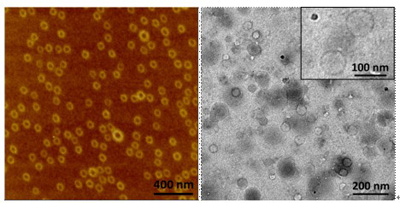| [1] Bates, F. S. Annu. Rev. Phys. Chem. 1990, 41, 525. [2] Zhu, J.; Liao, Y.; Jiang, W. Langmuir 2004, 20, 3809. [3] Talingting, M.; Munk, P.; Webber, S.; Tuzar, Z. Macromolecules 1999, 32, 1593. [4] Riegel, I.; Eisenberg, A. Langmuir 2002, 18, 3358. [5] Raez, J.; Manners, I.; Winnik, M. J. Am. Chem. Soc. 2002, 124, 10381. [6] Li, Z.; Chen, Z.; Cui, H.; Hales, K.; Qi, K.; Wooley, K.; Pochan, D. Langmuir 2005, 21, 7533 [7] Cornelissen, J.; Fischer, M.; Sommerdijk, N.; Nolte, R. Science 1998, 280, 1427. [8] Voets, I.; De Keizer, A.; De Waard, P.; Frederik, P.; Bomans, P.; Schmalz, H.; Walther, A.; King, S.; Leermakers, F.; Cohen Stuart. M. Angew. Chem. 2006, 118, 6825. [9] Zhang, L.; Eisenberg, A. Polym. Adv. Technol. 1998, 9, 677. [10] Zhu, J.; Jiang, W. Macromolecules 2005, 38, 9315. [11] Zhang, L.; Eisenberg, A. Science 1995, 268, 1728. [12] Walther, A.; Goldmann, A.; Yelamanchili, R.; Drechsler, M.; Schmalz, H.; Eisenberg, A.; M黮ler, A. Macromolecules 2008, 41, 3254. [13] Bai, Z.; He, Y.; Lodge, T. Langmuir 2008, 24, 5284. [14] Kim, B.; Park, S.; McCarthy. T.; Russell, T. Small 2007, 3, 1869. [15] Zhu. J.; Jiang, W. Macromolecules 2009, 42,399. [16] Gong, Y.; Hu, Z.; Chen, Y.; Huang, H.; He, T. Langmuir 2005, 21, 11870. [17] Lee, E.; Jeong, Y. H.; Kim, J. K.; Lee, M. Macromolecules 2007, 40, 8355. [18] Li, X.; Deng, M.; Liu, Y.; Liang. H. J. Phys. Chem. B 2008, 112, 14762. [19] He, X.; Schimid. F. Phys. Rev. Lett. 2008, 100,137802. [20] Huang, H.; Chung, B.; Jung, J.; Park, H.; Chang, T. Angew. Chem. 2009, 121, 4664. [21] Wei, Y. H.; Li, B. Y. Han, Y. C.; Pan, C. Y. Soft Matter 2008, 4, 2507. [22] Brandrup, J.; Immergut, E.H.; Grulke, E. A.; Abe, A.; Bloch, D. R. Polymer Handbook (4th ed ), New York, 1999. |
